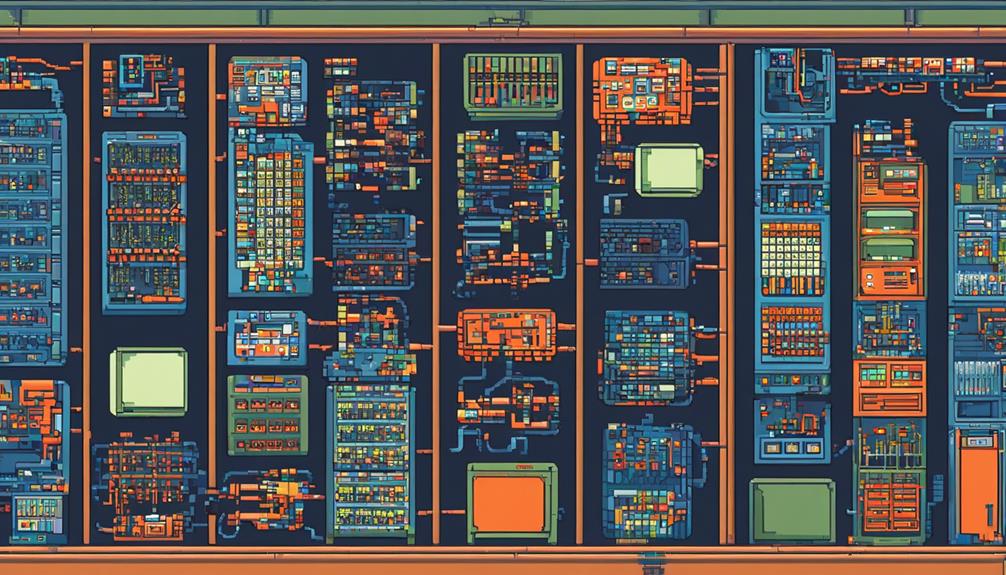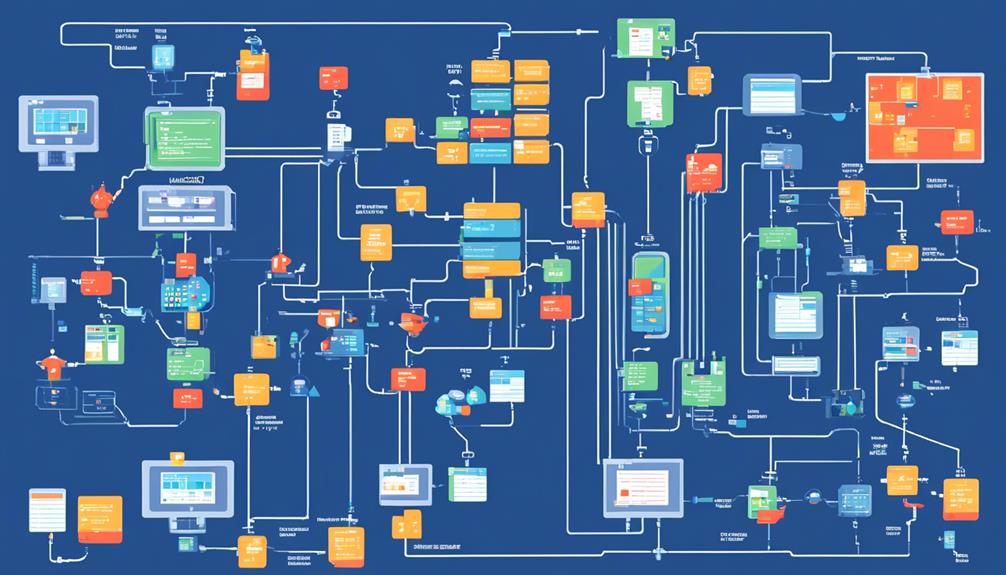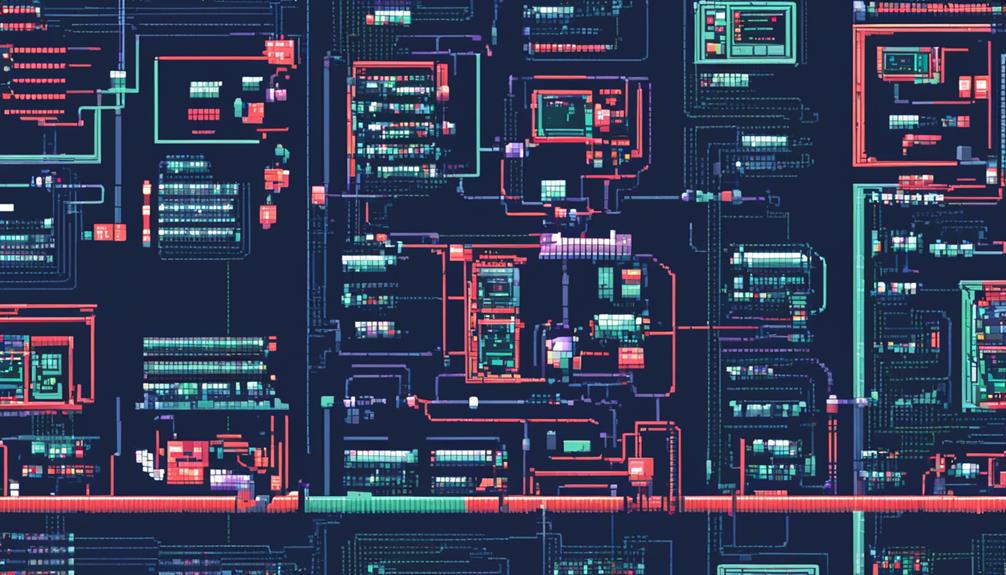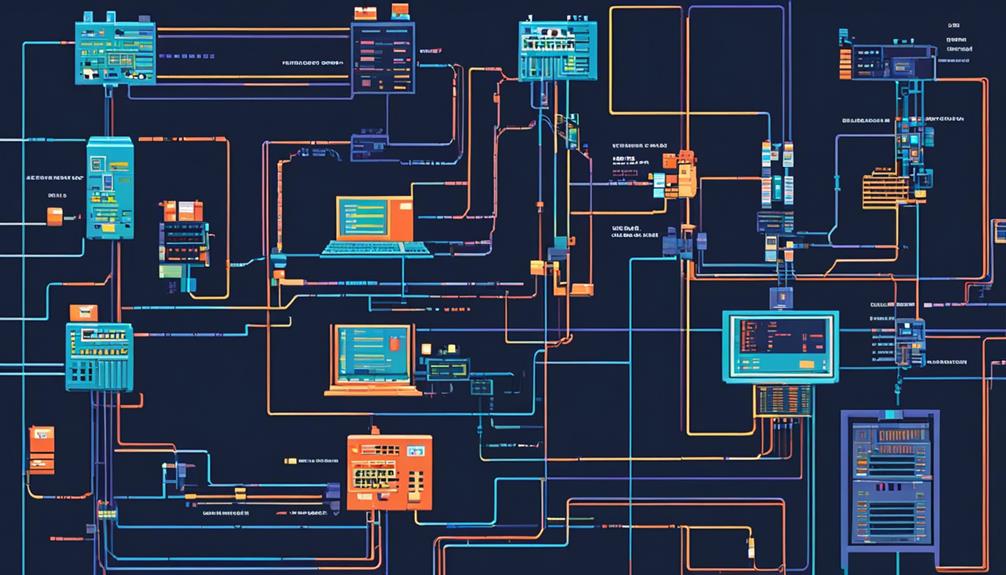PBX systems play a crucial role in businesses by facilitating efficient communication within an organization. Understanding how these systems operate is essential for maximizing their potential.
From the components that make up a PBX system to the intricacies of call routing and handling, there are various aspects to explore. Additionally, the integration of VoIP technology and the maintenance and upgrades required to keep the system running smoothly are topics worth delving into.
In this discussion, we will explore the inner workings of PBX systems, shedding light on their operation and providing insights into the benefits they offer to businesses.
Key Takeaways
- PBX systems consist of telephones, cables, a control unit, and optional components like call recording and voicemail systems.
- The software is essential for configuring and managing the PBX system, allowing administrators to customize call routing rules and manage extensions.
- PBX systems offer various routing options, such as call forwarding, simultaneous ringing, sequential ringing, and routing to voicemail, to efficiently handle incoming calls.
- Extensions in PBX systems enable internal communication, call routing between users and departments, and the customization of greetings and music. They also facilitate multi-location connectivity for seamless communication between office locations.
PBX System Components

PBX system components encompass a range of hardware and software elements that collectively facilitate call management and routing within the system. The hardware components of a PBX system typically include telephones, cables, and a control unit. The control unit is the central component that manages call routing and features within the PBX system. It ensures that incoming calls are directed to the appropriate destination within the phone system, whether it is to another extension within the organization or an external line.
In addition to the basic hardware components, PBX systems can also incorporate additional components such as call recording and voicemail systems. These features enhance the functionality of the phone system by allowing users to record and store calls, as well as receive and manage voicemail messages.
Modern PBX systems often utilize VoIP technology, which stands for Voice over Internet Protocol. This technology allows for digital signal management and routing of calls over an IP network, rather than traditional analog lines. VoIP enables greater flexibility and scalability, as well as cost savings compared to traditional phone systems.
While the hardware components are essential for the physical connectivity and functioning of the PBX system, the software is equally important. PBX systems require software for configuration, management, and additional features. The software allows administrators to set up and customize call routing rules, manage extensions and users, and access advanced features such as call analytics and reporting.
Call Routing in PBX Systems
When it comes to call routing in PBX systems, there are two main points to consider: routing options and call distribution methods.
Routing options refer to the various ways in which incoming calls can be directed to the appropriate extensions or departments. This can include options such as time-based routing, skill-based routing, or even interactive voice response (IVR) menus.
On the other hand, call distribution methods determine how calls are distributed among the available lines or channels, ensuring efficient and fair distribution of incoming calls.
Routing Options
Call routing in PBX systems is a crucial feature that efficiently directs incoming and outgoing calls through predetermined paths, allowing for customized call routes based on specific criteria. PBX systems offer various routing options to optimize call management and enhance communication efficiency.
These routing options include:
- Call forwarding: The system can automatically redirect calls to another extension or external number based on predefined rules.
- Simultaneous ringing: Calls can be routed to multiple extensions simultaneously, ensuring that they are answered promptly.
- Sequential ringing: Calls are directed to a series of extensions in a specific order until someone answers.
- Routing to voicemail: When calls cannot be answered, they can be automatically sent to voicemail for later retrieval.
With these routing options, PBX systems, including IP PBX systems, provide businesses with the flexibility to handle incoming calls effectively and ensure smooth communication flow.
Call Distribution Methods
To optimize call management and enhance communication efficiency, PBX systems offer various call distribution methods that efficiently route incoming calls among available agents or departments. These call distribution methods in PBX systems ensure that business calls are handled effectively and directed to the most appropriate individuals or teams.
One commonly used method is round-robin routing, which distributes incoming calls equally among available agents or departments in a sequential manner.
Simultaneous routing sends incoming calls to all available agents or departments simultaneously.
Weighted routing assigns a specific weight or priority to each agent or department, influencing the call distribution.
Least-occupied routing directs calls to the least busy agent or department based on current call load.
Lastly, skills-based routing matches incoming calls to agents based on their specific skills or expertise, ensuring appropriate handling.
PBX System Call Handling

PBX systems efficiently manage call routing for incoming and outgoing calls, ensuring seamless communication within an organization without relying on the public switched telephone network. These phone systems handle call handling in a variety of ways to meet the needs of businesses.
Here are four important aspects of PBX system call handling:
- Call Transfers: PBX systems allow users to transfer calls between different extensions or departments without dropping the connection. This feature enables efficient call handling and ensures that callers are directed to the appropriate person or department.
- Customized Greetings: PBX systems provide the option to set up customized greetings for incoming calls. These greetings can include personalized messages, recorded announcements, or even background music. Customized greetings enhance the caller's experience and give the organization a professional image.
- Voicemail: PBX systems often include voicemail functionality, allowing callers to leave messages when the intended recipient is unavailable. Voicemails can be accessed and managed through the phone system, ensuring that important messages are not missed.
- Multi-location Connectivity: PBX systems offer the capability to connect multiple office locations using the same phone system. This allows for seamless communication between different branches or departments, promoting collaboration and efficiency.
PBX System Extensions
In the realm of efficient call handling within PBX systems, one crucial component that facilitates internal communication and seamless connectivity is the implementation of PBX system extensions. These extensions play a significant role in enabling employees to communicate with each other without relying on the public switched telephone network (PSTN). By routing incoming and outgoing calls through a limited number of lines within the PBX system, extensions allow for efficient call management.
To provide a clear understanding of the benefits and functionality of PBX system extensions, the following table highlights key features and advantages:
| Features | Advantages |
|---|---|
| Internal Communication | Allows employees to communicate within the organization using extensions rather than external phone lines. |
| Call Routing | Enables the routing of calls between users and departments without dropping connections. |
| Customized Greetings | Provides the option to set up personalized greetings with recorded messages and choice of music for callers. |
| Multi-Location Connectivity | Connects multiple office locations using the same phone system, enhancing overall communication efficiency. |
PBX system extensions not only streamline internal communication but also enhance the professionalism of phone interactions. By incorporating customized greetings, callers receive a more personalized experience, which can positively impact customer satisfaction. Additionally, the ability to transfer calls between extensions ensures that connections remain intact, allowing for smooth call management.
Furthermore, PBX system extensions are not limited to a single location. They enable the seamless integration of multiple office locations, providing a unified phone system for the entire organization. This connectivity ensures that employees can communicate effortlessly, regardless of their physical location.
VoIP Integration in PBX Systems

VoIP integration enhances the functionality and versatility of PBX systems by enabling the transmission of voice calls over internet protocol networks. This integration brings several benefits to organizations, including:
- Support for both analog and IP calls: VoIP integration in PBX systems allows organizations to handle both traditional analog calls and IP-based calls. This flexibility ensures that businesses can seamlessly transition from legacy systems to modern IP-based communication technologies.
- Cost savings: By integrating VoIP into PBX systems, organizations can consolidate their telecommunication and data connectivity services with a single provider. This consolidation can lead to significant cost savings by eliminating the need for separate providers and reducing infrastructure costs.
- Gradual transition to IP calling: VoIP integration allows organizations to gradually migrate from traditional analog calling to IP calling. This phased approach enables businesses to leverage the benefits of modern communication technologies without disrupting their current operations.
- Reliable and secure connectivity: VoIP integration in PBX systems ensures reliable and secure connectivity between staff and customers. IP networks provide robust encryption protocols, enhancing the security of voice calls. Additionally, the use of internet protocol networks offers improved call quality and reliability compared to traditional phone lines.
PBX System Call Forwarding
Call Forwarding is a valuable feature in PBX systems that allows users to redirect incoming calls to alternative phone numbers or extensions when they are unable to answer. This feature ensures that important calls are not missed and enables users to forward calls to their mobile phones or other devices. With Call Forwarding, users can set up specific criteria for call forwarding, such as forwarding calls based on the time of day or caller ID.
PBX System Call Forwarding can be easily managed and customized through the system's interface or management portal. Users can define the forwarding rules and specify the destination number or extension to which the calls should be forwarded. This flexibility allows users to have full control over their call forwarding settings, ensuring seamless communication and uninterrupted customer service.
When an incoming call is received, the PBX system checks the forwarding rules set by the user. If the criteria are met, the call is automatically redirected to the specified alternative number or extension. This ensures that the call reaches the intended recipient, even if they are away from their desk or office.
Call Forwarding is not limited to incoming calls only. PBX systems also allow users to set up call forwarding for outgoing calls. This means that users can redirect their outgoing calls to a different number or extension, providing them with flexibility and convenience when making calls from their PBX system.
PBX System Call Waiting

PBX System Call Waiting provides users with the ability to receive incoming calls while already engaged in another call, ensuring efficient call management and preventing missed opportunities. When a user is on a call, a notification or tone alerts them to the incoming call. With Call Waiting, the user has the flexibility to choose how to handle the waiting call. They can put the current call on hold and answer the waiting call, or they can choose to ignore the waiting call and continue with the current call.
Here are four key features of PBX System Call Waiting:
- Enhanced Call Management: Call Waiting is a standard feature in PBX systems that enables users to efficiently manage incoming calls. By being able to receive calls while on another call, users can prioritize and handle calls effectively, ensuring that important calls are not missed.
- User-Friendly Notification: When a call comes in while the user is already on a call, the PBX system will typically provide a notification or tone to alert the user. This prompt allows the user to make an informed decision on whether to answer the waiting call or continue with the current call.
- Call Holding Capability: PBX systems with Call Waiting allow users to put the current call on hold to answer the waiting call. This feature ensures that users can switch between calls seamlessly and provide a professional and efficient experience for both parties involved.
- Prevent Missed Opportunities: With Call Waiting, users can avoid missing important calls, even when they are already engaged in another call. This feature is particularly beneficial for businesses as it helps maintain excellent customer service and prevents potential business opportunities from slipping through the cracks.
PBX System Call Transfer
After exploring the efficiency of PBX System Call Waiting, it is essential to delve into the functionality and benefits of PBX System Call Transfer.
PBX systems provide the capability to transfer calls between extensions or departments without interruption, improving internal communication within an organization.
One of the main advantages of call transfer in PBX systems is the seamless redirection of calls to the appropriate recipient. This enhances call management efficiency as calls can be quickly and accurately transferred to the person or department best equipped to handle them. Additionally, PBX systems allow users to transfer calls to voicemail or other extensions, ensuring that important messages are received in a timely manner.
Another benefit of PBX system call transfer is the ability to transfer calls externally to mobile devices or other external numbers. This feature improves accessibility, allowing employees to stay connected and receive calls even when they are away from their desk or office. By enabling calls to be transferred externally, PBX systems contribute to a more agile and flexible workforce.
Moreover, PBX systems can be customized with features such as music on hold or personalized messages during the transfer process. This not only enhances the professional image of the organization but also provides a pleasant experience for callers, reducing the likelihood of them hanging up or becoming frustrated while waiting for the transfer to complete.
PBX System Call Recording

Effective call management and regulatory compliance are facilitated through the implementation of PBX system call recording. This feature allows businesses to securely record and store phone conversations. It is essential for organizations that require a reliable and comprehensive record of their communications. Here are some key aspects of PBX system call recording:
- Quality Assurance: Call recording enables businesses to monitor and evaluate the performance of their employees in handling customer calls. This helps identify areas for improvement and ensure that customer service standards are met.
- Dispute Resolution: Recorded calls can be invaluable in resolving disputes or discrepancies. By reviewing the recorded conversations, businesses can accurately assess the situation and provide evidence if needed.
- Training and Development: The recorded calls serve as a valuable resource for training new employees or providing ongoing coaching to existing staff. Managers can use these recordings to highlight best practices and address areas that need improvement.
- Compliance: Many industries have specific regulations regarding call recording and retention. PBX system call recording ensures that businesses adhere to these regulations, avoiding potential legal and regulatory issues.
PBX call recording can be integrated into both traditional and IP-based telephone systems. Authorized users can initiate the recording manually or set it up to be automated for specific scenarios. The recorded calls are typically stored securely, either on-premises or in the cloud, and can be easily accessed for playback or archival purposes.
PBX System Maintenance and Upgrades
Regular maintenance and upgrades are essential for ensuring the smooth and efficient operation of a PBX system. PBX systems, being complex communication systems, require regular attention to ensure optimal performance and reliability.
Maintenance tasks for a PBX system include checking for system errors, updating firmware, and conducting regular backups. These tasks help identify and resolve any issues that may arise, preventing potential disruptions in communication.
Upgrades to hardware and software components also play a crucial role in maintaining a PBX system. As technology advances and security threats evolve, it is necessary to keep the system up-to-date to ensure its security and functionality. Upgrades may involve replacing outdated equipment, updating software, and integrating new features to enhance system performance.
By incorporating the latest advancements, the PBX system can keep up with the ever-changing communication needs of an organization.
Regular maintenance and upgrades not only ensure the smooth operation of a PBX system but also extend its longevity. By identifying and addressing potential issues promptly, the system can avoid major breakdowns and minimize downtime. Furthermore, keeping the system up-to-date with the latest technology and security measures helps protect against potential vulnerabilities and ensures the system remains robust and reliable.
Frequently Asked Questions
What Are the Three Main Components of the Pbx?
The three main components of a PBX system are the control unit, telephone lines, and telephone sets.
The control unit is responsible for managing call routing, call features, and connecting internal calls to external lines.
Telephone lines facilitate incoming and outgoing calls, and they are managed by the PBX system.
Telephone sets, on the other hand, are the physical devices used by employees to make and receive calls within the PBX system.
These components collectively enable internal communication and connect internal lines to external networks.
What Are the Functions of Pbx?
The functions of a PBX system include:
- Facilitating internal communication within an organization
- Routing incoming and outgoing calls
- Providing features such as call forwarding and voicemail
- Connecting internal lines to external phone lines
PBX systems offer several advantages, such as:
- Cost savings
- Improved call management
- Enhanced productivity
There are different types of PBX systems available, including:
- Traditional on-premises systems
- Cloud-based solutions
Choosing the right PBX system for your business involves considering factors such as:
- Scalability
- Cost
- Required features.
What Protocol Does PBX Use?
PBX systems utilize various protocols for communication, including SIP (Session Initiation Protocol) and H.323. These protocols enable PBX systems to establish, modify, and terminate communication sessions, facilitating voice and video calls over IP networks.
SIP is a popular protocol used by PBX systems, while H.323 is commonly employed in traditional telephony networks. Understanding the protocol a PBX system utilizes is essential for ensuring seamless and effective communication within an organization.
Harnessing the advantages of these protocols, PBX systems enhance communication functionality and enable efficient internal and external calls.
How Does Hosted PBX Work?
Looking for the benefits, factors to consider, and challenges faced when implementing a hosted PBX solution?
A hosted PBX system offers numerous advantages, including cost savings, scalability, and simplified communication infrastructure.
When choosing a hosted PBX provider, factors such as reliability, security, and affordability should be considered.
However, implementing a hosted PBX solution may come with challenges such as integration with existing systems and ensuring seamless communication.
It is crucial to choose a provider that can address these challenges effectively.

